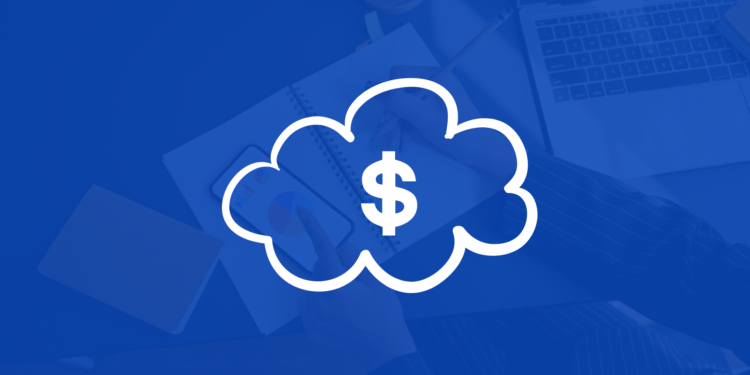Cloud computing has become an indispensable resource for businesses and organizations, offering scalability, flexibility, and efficiency. However, as cloud adoption continues to grow, so does cloud spending. Many companies find themselves overspending on cloud services due to inefficient resource allocation, lack of cost optimization strategies, or failure to fully utilize the capabilities of cloud platforms.
Maximizing cloud spend is not just about reducing costs—it’s about ensuring that every dollar invested in the cloud contributes to greater productivity, innovation, and business growth. By implementing strategic cost optimization techniques, businesses can unlock the full potential of their cloud investments. Here’s how:
1. Right-Sizing and Optimizing Resources
One of the most common reasons for cloud overspending is the misallocation of resources. Companies often purchase more storage, computing power, or bandwidth than they actually need, leading to unnecessary expenses.
How to Optimize Resources:
- Conduct a Cloud Resource Audit: Regularly review cloud usage to identify underutilized or idle resources. Use cloud monitoring tools like AWS Cost Explorer, Azure Cost Management, or Google Cloud Billing to track resource consumption.
- Right-Size Instances: Cloud providers offer multiple instance sizes, allowing businesses to match their workloads with the most efficient instance type. Choosing the right size prevents over-provisioning and underutilization.
- Implement Auto-Scaling: Dynamic scaling enables businesses to automatically adjust cloud resources based on demand, ensuring they only pay for what they use.
By aligning resource allocation with actual business needs, companies can significantly reduce unnecessary cloud spending.
2. Leverage Reserved Instances and Spot Pricing
Most cloud providers offer different pricing models, allowing businesses to optimize costs based on their usage patterns. Two cost-effective options are Reserved Instances (RIs) and Spot Pricing.
Understanding Pricing Models:
- Reserved Instances (RIs): Companies that have predictable workloads can commit to Reserved Instances, which offer substantial discounts compared to on-demand pricing. AWS, Azure, and Google Cloud provide RI options with discounts of up to 75%.
- Spot Pricing (or Preemptible Instances): Businesses with flexible workloads can use spot instances, which provide lower costs by taking advantage of unused cloud capacity. While spot instances can be terminated if demand spikes, they are excellent for non-critical workloads like data processing and machine learning.
By strategically using these pricing models, businesses can optimize their cloud costs without sacrificing performance.
3. Implement a Cloud Governance Strategy
A lack of governance can lead to unchecked cloud spending, security vulnerabilities, and compliance risks. Implementing a strong cloud governance framework ensures cost control, resource efficiency, and policy enforcement.
Key Governance Practices:
- Set Spending Limits and Alerts: Use cost management tools to set budgets, allocate spending limits, and receive alerts when usage exceeds predefined thresholds.
- Define Policies for Cloud Usage: Establish policies on who can provision resources, which services are authorized, and how cost controls are enforced.
- Tagging and Cost Allocation: Implement tagging strategies to track resource ownership, enabling organizations to identify which departments or projects contribute to cloud expenses.
Cloud governance ensures that resources are used efficiently while preventing unnecessary expenses and security risks.
4. Optimize Storage Costs
Cloud storage costs can quickly add up, especially when businesses store data inefficiently. Optimizing storage usage can lead to significant savings.
Best Practices for Storage Optimization:
- Use Tiered Storage: Cloud providers offer different storage classes, including standard, infrequent access, and archival storage (e.g., AWS S3 Glacier, Azure Blob Storage). Moving less frequently accessed data to lower-cost storage tiers can reduce costs.
- Implement Data Lifecycle Policies: Automate data retention and deletion policies to avoid storing obsolete or redundant data.
- Compress and Deduplicate Data: Reduce storage consumption by eliminating duplicate files and compressing large datasets.
By adopting these practices, businesses can cut storage expenses while ensuring efficient data management.
5. Utilize Cost Optimization Tools and Automation
Leading cloud providers offer cost management tools that provide insights into cloud spending and automation options to reduce costs.
Recommended Tools for Cloud Cost Management:
- AWS Cost Explorer & Trusted Advisor: Helps analyze usage patterns, identify cost-saving opportunities, and optimize AWS resources.
- Azure Cost Management & Advisor: Provides recommendations on cost optimization and underutilized resources.
- Google Cloud Billing & Recommender: Offers insights into spending trends and optimization opportunities.
Additionally, automation tools like Infrastructure-as-Code (IaC) (e.g., Terraform, AWS CloudFormation) enable businesses to manage cloud infrastructure efficiently, reducing manual errors and ensuring resource efficiency.
6. Adopt a Multi-Cloud or Hybrid Strategy Wisely
Many businesses use multi-cloud or hybrid cloud strategies to enhance flexibility and resilience. However, without proper management, multi-cloud deployments can lead to increased costs and complexity.
How to Optimize Multi-Cloud Spending:
- Compare Pricing Across Providers: Different cloud providers offer competitive pricing for similar services. By selecting the best option for specific workloads, businesses can save costs.
- Use Cloud Cost Aggregation Tools: Platforms like CloudHealth and Spot.io help businesses manage and optimize multi-cloud spending.
- Avoid Vendor Lock-in: Over-reliance on a single cloud provider can lead to higher costs. Ensuring workload portability allows businesses to switch providers if necessary.
A well-planned multi-cloud strategy ensures businesses get the best value from their cloud investments.
Conclusion: Unlocking Cloud Potential Through Strategic Spending
Cloud computing offers immense opportunities for businesses, but without careful cost management, organizations can quickly overspend without fully utilizing their resources. By implementing right-sizing strategies, leveraging reserved and spot pricing, enforcing governance policies, optimizing storage, using cost-management tools, and adopting a smart multi-cloud strategy, businesses can maximize their cloud spend and unlock the full potential of their investments.
In 2025, organizations that prioritize cloud efficiency will not only save money but also improve operational performance, security, and innovation. A well-optimized cloud strategy ensures that businesses can scale effectively while keeping costs under control, allowing them to focus on growth and digital transformation.


















